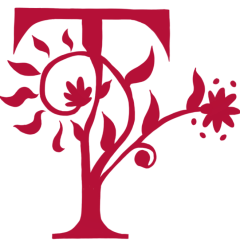We have published our Secondary Sources page! (Finally!)
Our hope is that this page will function as a resource for those interested in learning more about/from scholarly writing on Tolkien’s engagements with alliterative metre, Old English, and language more broadly.
I (Gavin) have separated the page into a few sections, each compiled by different members of our team. MacKenzie Moore (one of our past team members), Alyssa Evans, and myself compiled the first section, which I’ve rather tentatively titled “Medieval Alliterative Poetry in Tolkien.” I welcome suggestions for ways to break this section down, because I’m not sure that my titling is wholly accurate. It’s the largest section, consisting of peer-reviewed articles and books written about Tolkien’s literary engagements with Old English and Old English poetry. However, while some of these sources focus more on the cultural integration of Old English themes (as in Tolkien’s creation of the Rohirrim), others are much more alliteration-focused, offering scans and close readings of Tolkien’s Old English poetry. One might think that it would be easy to divide the larger section into two, as I’ve just outlined, but there is so much overlap that I find myself getting stuck. For example, if an article primarily focused on Old English culture includes one paragraph on alliterative metre, where does it then get filed? I don’t have a solution yet!
The second section, compiled by past team member Jordan Audas and current assistant Redford Ingram, is more straightforward. Titled “Tolkien and Philology,” this section includes sources on Tolkien’s philological training—things he learned, things he taught, and things he implemented in his writing.
The third, and shortest, section is titled “New Old English.” Compiled by Anna Smol and myself, this section is inspired by (and includes) Chris Jones’ work on what he coins “New Old English” poetry—poetry responding to and developing features of Old English poetry, with attention to its formulaic features like alliteration (see Jones, “From Eald Old to New Old”). While these sources do not always speak to Tolkien’s work explicitly, we would argue that Tolkien’s alliterative verse could be defined as “New Old English” poetry and can be better understood when read through said lens.
Continuing our work in gathering secondary sources, we’ll be adding works on Tolkien’s engagement with Middle English alliterative poetry as well.

Leave a comment